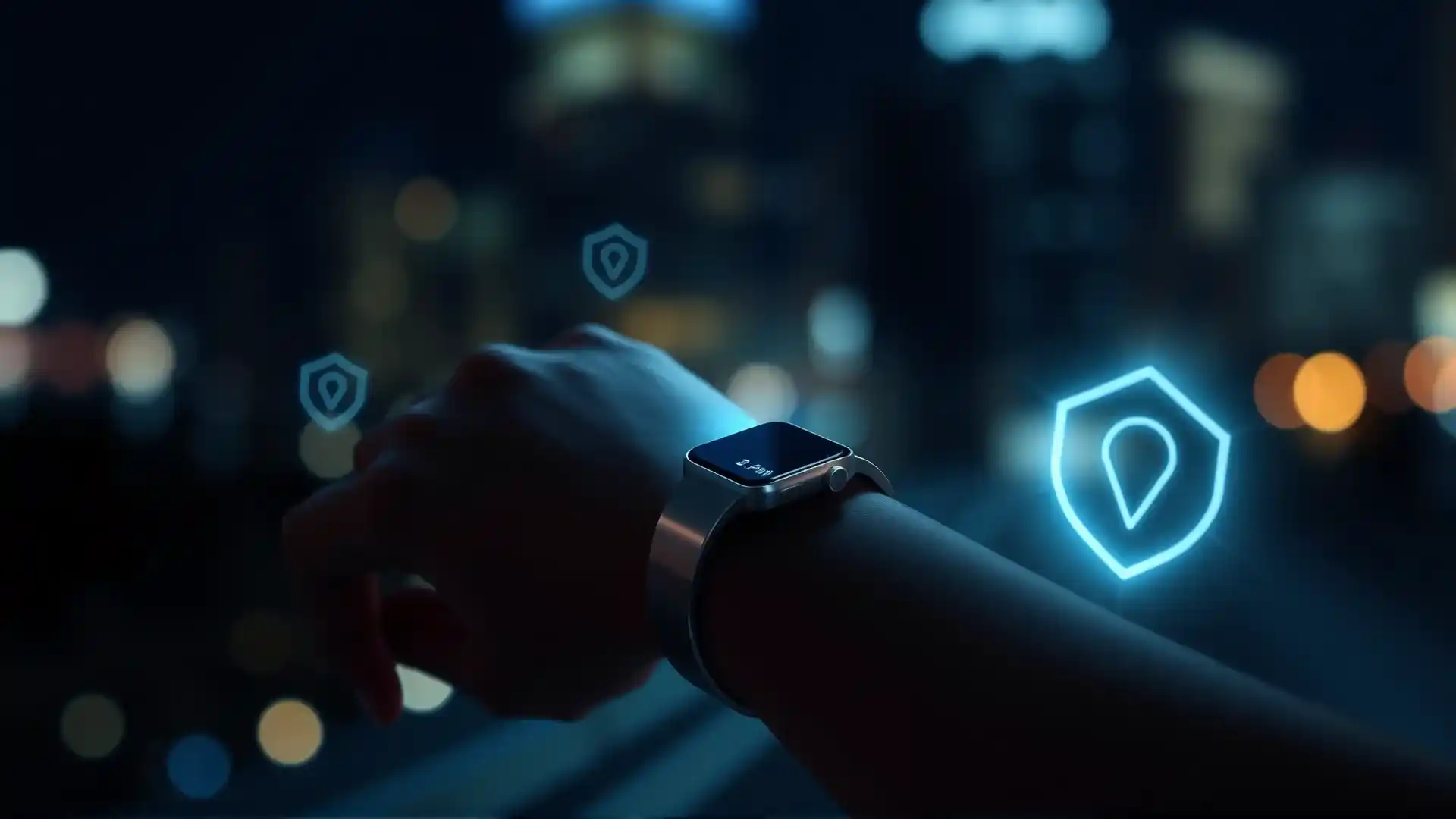Table of Contents
Public safety plays a vital role in modern society; every community is working hard to shield its people from harm, emergencies, and possible threats. In today’s fast-paced world, technology has put itself in the fore for advancing public safety. From being a support tool, technology has evolved into a driver of inventions that help law enforcement, emergency responders, and citizens alike to prevent incidents, respond quickly, and recover effectively.
This revolution marks a new chapter in public safety, where digital innovation plays an important role. The cities now have surveillance cameras, drones, and IoT sensors to feed authorities with information in real-time. Applications on mobile devices and GPS technology not only fill the void in the race to intervene during emergencies but also enable communication between individuals and emergency services.
Predictive algorithms identify potential crime hotspots; social media has become a powerful communication channel for delivering emergency alerts and updates. The amalgamation of these technologies creates both a safer environment and an atmosphere of active community engagement in security.
Join us for an extended conversation about the profound impact technology is bringing about in the world of public safety. We will focus on improvements made in surveillance, monitoring, and the newer ideas in such areas as biometric identification as ways in which these positives are developing safer, stronger communities.
Introduction
Technology plays a crucial role in the improvement of public safety by offering innovative solutions to several problems faced by law enforcement agencies and emergency responders. From helping response times to communication and data analytics, advancements in technology have transformed the tide of public safety initiatives.
Here, we will elaborate on the important ways through which technology plays a role in keeping our communities safer and more secure.
1. Smart Surveillance and Monitoring Systems
Smart surveillance systems are among the most important advances in terms of public safety technology. From the first usage of the standard CCTV systems, these developed into more sophisticated networks of integrated HD cameras assisted by artificial intelligence (AI) algorithms that follow public spaces in real-time monitoring along with automatic detection of suspicious activities, and inherent danger.
With this capability, in real-time, law enforcement can respond very quickly in case of any unpleasant incident in an area and prevent crimes before they happen.

CCTV Cameras
CCTV (Closed-Circuit Television) cameras are now a common feature in public spaces, businesses, and residential neighborhoods, playing a vital role in strengthening public safety. By providing constant surveillance of streets, parks, and buildings, these cameras help deter criminal activity. The visible presence of cameras often discourages potential offenders, contributing to safer environments for all.
Moreover, when incidents arise, CCTV footage becomes an essential resource for law enforcement, supporting investigations and aiding in bringing perpetrators to justice.
Drones for Aerial Surveillance
Technological advancements have made drones a necessary tool in aerial surveillance. They come with high-resolution cameras that enable them to monitor huge areas without much effort. They provide law enforcement and emergency personnel with real-time video feeds. Their true utility comes in search and rescue missions, as they quickly locate people who need help.
Moreover, in the case of natural disasters or large-scale events, drones enable authorities to assess damage and respond more precisely and quickly.
Geospatial Data Analysis
Geospatial data analysis, driven by geographic information systems, is key to improving public safety. It is through the integration of maps with various kinds of data, such as crime rates, traffic flows, and emergency response time, that authorities can make very informed, data-driven decisions. For instance, law enforcement can identify hotspots where crimes are committed and spend their resources better.
Apart from that, geospatial analysis helps in disaster preparedness and response by pointing to vulnerable areas and designing practical evacuation routes. This technology empowers public safety agencies to hone their strategies and more effectively serve their communities.
Facial Recognition Systems
Advanced algorithms in facial recognition technology have become a fundamental aspect of public safety initiatives as it identify and verify people through their facial features. The new technology holds many promising applications: it may help locate missing persons, identify suspects, and strengthen security at public events. It also raises vital concerns about privacy and civil liberties.
While it aims to ensure safe transportation, its ethical and legal implications continue to raise debates, thereby calling for strong regulations and safeguards to maintain a balance between its benefits and the risks it poses.
2. Predictive Policing for Crime Prevention
Predictive analytics is another mighty tool that enhances the public security. Depending on the analysis of large and massive datasets, such as historical crime data, weather patterns, and social media activity, predictive models will determine potential crime hotspots and anticipate possible incidents of crime even before they occur.
Such a proactive approach would allow law enforcement to engage their resources more efficiently, positioning officers in high-risk areas to avert crimes.
Most notably, the Atlanta Police Department initiated advanced predictive policing technology, halting the rise of citywide crime by 19%. Such data-driven approaches not only allow better allocation of resources but also strengthen community trust.
Data Analytics for Crime Prediction
Predictive policing uses data analytics to find patterns and trends in crime. This information can come from huge databases of past crimes, demographics, or even the weather. Law enforcement officials can identify regions that are more likely to experience crimes by looking at these datasets.
Advanced algorithms sort through the data and provide police departments with potential hotspots so that resources can be utilized appropriately. Not only is this strategy a proactive increase in law enforcement visibility but also deters potential criminals from engaging in their illicit activities.
Crime Heatmaps
Crime heat maps visually represent data from predictive policing, spotlighting areas with elevated crime risks. Using color-coded visuals, these maps enable law enforcement to identify high-risk zones and deploy resources more effectively. By guiding patrol strategies, heat maps contribute to crime prevention while fostering a greater sense of security within the community.
Behavioral Analysis Tools
Behavioral analysis tools add a psychological factor to predictive policing that includes the activities and behaviors of those who may commit offenses. Through analysis of crime trends, law enforcement agencies will have insight into the potential criminal to be able to provide early intervention and rehabilitative measures, thereby aiding in decreasing recidivism and making for long-term public safety.
3. Enhanced Emergency Communication Systems
Effective communication is of importance in emergencies, as the outcome of many situations largely depends on it, and technological advancement has greatly enhanced the way information is exchanged not only among public safety agencies but also between these agencies and the general public.
The landscape of communication systems has now embraced a variety of sophisticated tools like CAD systems, two-way radios that allow instant dialogue, mobile applications that connect users in real time, and social media platforms that afford wide outreach.
These innovative tools empower emergency responders by offering seamless real-time communication, hence allowing authorities to distribute critical information, which may be life-saving, in an efficient and timely manner.

AI-Powered Dispatch Systems
AI has transformed and improved the efficiency of any emergency response system by changing a lot about dispatch centers’ efficiency. AI-driven systems that look at incoming emergency calls with ranking based on severity level, location, and available resources ensure that critical cases are attended to promptly.
AI also serves to assist in resource management by indicating which units are best sent to respond to a particular occurrence. Using historical data and real-time updates, these systems enable swift and accurate decision-making.
AI-powered dispatch technology exemplifies how innovation has made emergency response better than ever, not more effective outcomes, saving countless lives.
Mobile Apps for Reporting Emergencies
Smartphones are increasingly becoming a ubiquitous tool for the current digital generation and creating paths for reporting emergencies via mobile applications. These apps can alert officials about any occurrences directly by the user, and henceforth, more efficient and speedy ways to communicate such scenarios.
Moreover, not just that, various apps offer opportunities to add information, which sometimes is photographic or video proof, essential for such events.
Such features like automatic location tracking improve response speed and accuracy. In addition, mobile applications have equipped the public with the tools to be actively involved in matters of public safety by enabling timely and accurate reporting of incidents.
Disaster Alert Systems
Disaster alert systems are crucial for public safety, especially in regions prone to natural disasters. By combining technologies such as seismic sensors, weather satellites, and early warning algorithms, these systems can detect imminent threats like earthquakes, hurricanes, or floods.
Once a potential disaster is identified, automated alerts are sent to affected areas, allowing both residents and authorities to respond quickly.
These systems have saved countless lives by providing advance notice and enabling timely evacuations. They demonstrate how technology enhances public safety by offering early warnings and helping protect communities from catastrophic events.
4. Wearable Technology for Personal Safety
Wearable technology is transforming personal safety both for the public and first responders. Smartwatches and body cameras can record vital signs and real-time location information in emergencies. To the first responders, the wearables enhance accountability and security since they record the interaction between first responders and individuals involved during critical incidents.
Law enforcement officers can also use wearables to get alerts in real-time of any threat that may be nearby or of any situation that may be ongoing. The integration of wearables in public safety operations increases situational awareness and speeds response times.

Real-Time Health Monitoring & Stress Management
Wearable technology is changing the way first responders and the general public monitor health and manage stress in real-time. The device, with sensors, will be able to track vital signs like heart rate, blood pressure, and body temperature. These devices can give feedback in real-time to both the user and command centers.
This real-time monitoring is crucial in detecting early signs of stress or fatigue, which can impair a responder’s performance and contribute to long-term health risks. In addition, wearables can help combat cognitive fatigue by suggesting breaks or adjusting environmental factors to ease mental strain.
Biometric monitoring on such devices allows an organization to enhance the health management of a person and, therefore, the well-being of a workforce. Wearable data also enables supervisors to make informed decisions over workload, breaks, and change, which may enhance the aspects of operations that reduce stress while enhancing performance.
Enhancing Situational Awareness and Communication
Wearable technology is improving situational awareness and communication for law enforcement and first responders, enhancing public safety. Devices like smartwatches and AR glasses provide real-time data, such as building layouts and hazard locations, helping responders navigate emergencies safely.
They also enable seamless communication, transmitting live audio video and delivering haptic feedback for nearby threats. This integration boosts coordination and response times, ensuring responders are better prepared for dynamic situations.
Conclusion
In today’s world, public safety is the foundation of progress and prosperity, as it ensures the protection of citizens and critical infrastructure. By leveraging advanced technologies across key domains such as border control, law enforcement, and emergency services, a unified and efficient response system is established.
This seamless coordination, driven by intelligent hubs in command-and-control centers, enables faster, more effective action, safeguarding communities and enhancing resilience. As innovation continues to push boundaries, the future of public safety will be shaped by ever-evolving technologies, ensuring that safety and security are not just reactive but proactive and adaptive to emerging challenges.
Embrace the future of public safety today. By adopting cutting-edge technologies, you can enhance security, streamline responses, and protect what matters most. Take the first step towards a smarter, safer tomorrow—transform your approach with innovative solutions that empower your team and safeguard your community. The time to act is now.





